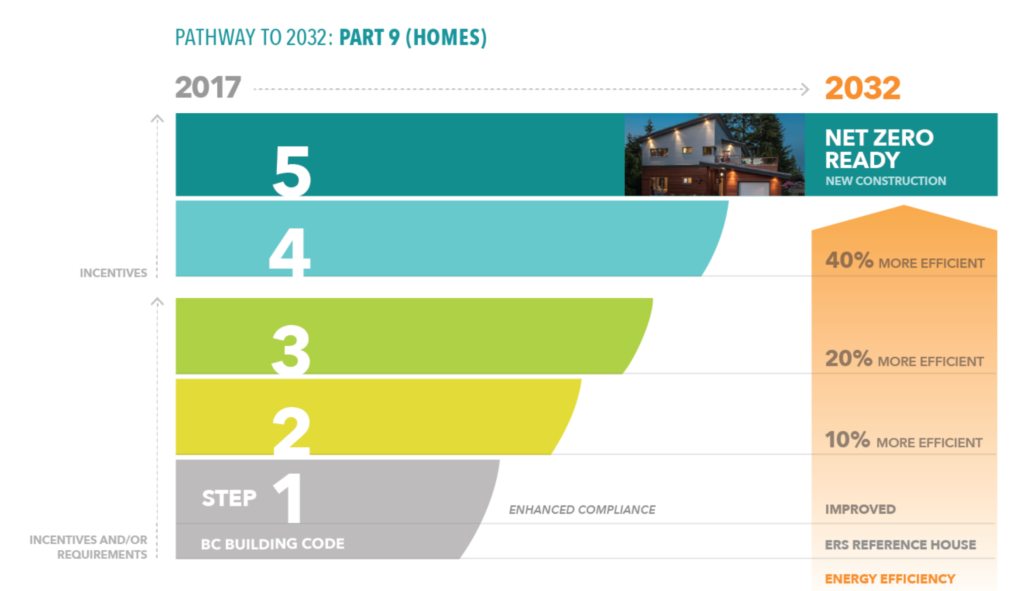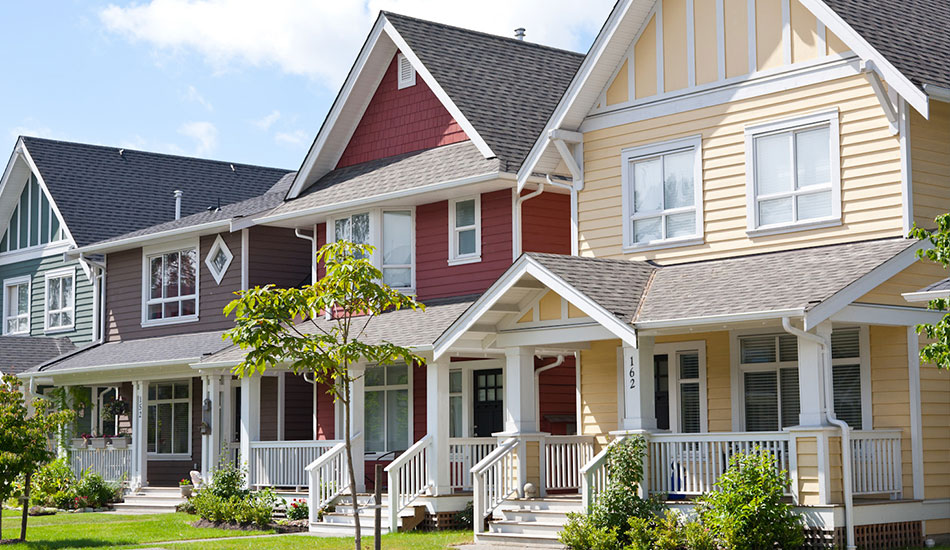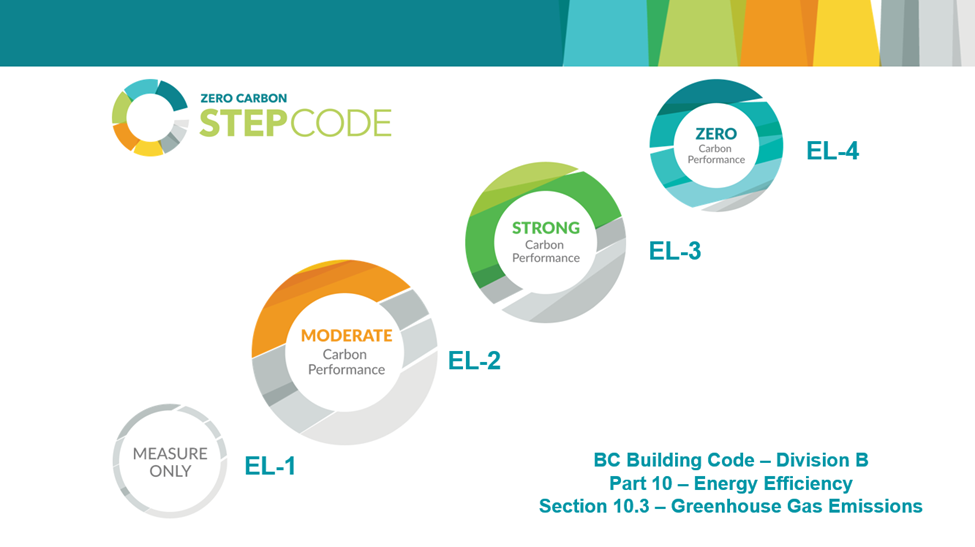The BC Energy Step Code
Energy Step Code started in 2017 as an opt-in building efficiency 5-tiered standard, and Airtight Energy has guided Builders since day one. The majority of BC Regions and Municipal Building Permit offices adopted the lower Step-2 or 3, and offered incentives for early users. As of May 1, 2023 all local government building departments require Step-3 plus EL-1 for Part-9 Residential homes, while Vancouver and Victoria lead with Step-4 ahead of the 2027 adoption. BC wants all new buildings to achieve Step-5 and EL-4 Zero-Carbon emissions by 2032.
Energy Step Code Construction Stages

BC Energy Step Code 15-Year Overview
The BC Energy Step Code started in 2017 as an opt-in building efficiency 5-tiered standard, and Airtight Energy has guided Builders since day one. The majority of BC Regions and Municipal Building Permit offices adopted the lower Step-2 or 3, and offered incentives for early users. As of May 1, 2023 all local government building departments require Step-3 plus EL-1 for Part-9 Residential homes, while Vancouver and Victoria lead with Step-4 ahead of the 2027 adoption. BC wants all new buildings to achieve Step-5 and EL-4 Zero-Carbon emissions by 2032.

Zero Carbon Step Code
The Zero Carbon Step Code is a tool for BC Municipalities to encourage or require lower emissions in new buildings. Each City or Regional District can reference the Zero Carbon Emissions-Level in bylaws and programs to require or encourage lower carbon new construction in their communities. On Vancouver Island the early adopters have been Victoria, Saanich, Duncan, North Cowichan, and Nanaimo requiring EL-4 by July 2024.
The focus of the Zero Carbon Step Code is emissions reductions. BC Buildings are the third leading source of Greenhouse Gases, and 99% of the carbon footprint is from the heating (65%) and hot water (34%) loads. A builder can achieve EL-4 using an electric Heat Pump and hot water because our Hydro is 98% clean renewable energy.
The Zero Carbon Step Code is an environmental addition to the Energy Step Code and both are intended to be used in combination to reduce emissions and energy consumption for new buildings over their Century life span.
The 4 Zero Carbon Emission Levels are:
EL-4 Zero Carbon Performance: in most cases will require the full electrification of a building;
EL-3 Strong Carbon Performance: in most cases, will require decarbonization of both space heating and domestic hot water systems;
EL-2 Moderate Carbon Performance: in most cases, will require decarbonization of either space heating or domestic hot water systems; and
EL-1 Measure-only: requires measurement of a building’s emissions without reductions, and is intended to build knowledge and capacity;
The Energy and Zero Carbon Step Code requirements impact primary space and water heating in new construction only and are based on performance. Secondary heating sources, as well as auxiliary appliances such as stoves and barbecues, are not affected by the changes.


